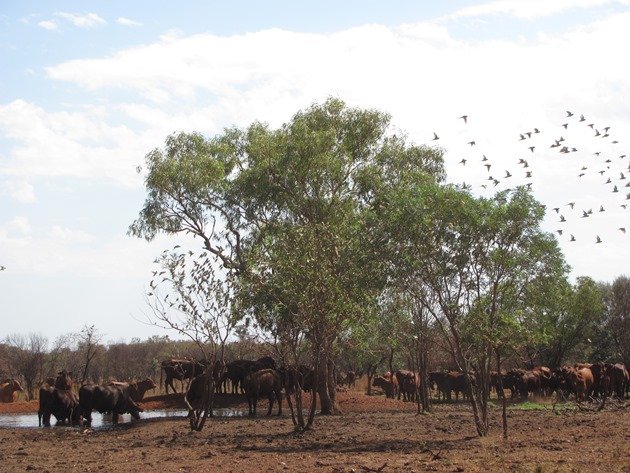
Life’s been pretty hectic since we returned from a trip into the Pilbara area of Western Australia and I have hardly touched on all of our adventures due to other exciting bird news back home. What with the excitement of the Temminck’s Stint, which was a “first for Australia” and the pair of Australian Painted Snipe that arrived it is suddenly January already! Both of these species have left the ephemeral lake where they were due to the fact that the rains have not come and there is very little water left at all. On top of that we had the excitement of the birds that had been flagged overseas and subsequently observed on our shores in Broome. The Little Tern and Terek Sandpiper were great finds and add to the knowledge of where birds travel to on their migration each year. I had mentioned Marble Bar a few weeks ago and the Pilbara area is a huge mass of mostly uninhabited land, so our travels took us to some rather remote places.
After camping in the bush on 18th November we headed off along a gravel road and noticed some cattle near a small dam beside the road about 08:45am on the 19th November. Any source of water in such a dry area of Australia is worth stopping and checking out and as we approached an Australian Bustard flew off after taking a drink. We then noticed swirling green all around us and the dam and it was literally thousands of Budgerigars. We estimated the flocks to be of at least three thousand Budgerigars, but it could only be an estimate with the constant swirling and brief stops at the water in the dam to drink.
Swirling “green” over the dam
Part of the Budgerigar flock
Budgerigars are very nervous in the wild and always use the “safety in numbers” strategy around water. Hundreds of Budgerigars were swooping down to the water and almost blocked our view of the cattle! Well, we are not really interested in cattle, but love the fact that every dam that is in place for cattle is a brilliant place to bird!
Budgerigars blocking our view of the cattle!
Every tree around the dam was full of Budgerigars and it was one of the most amazing sights on our travels in the Pilbara. There were plenty of other birds using the dam as a source of water, but by far the most numerous were the Budgerigars! You will note that in the wild they are only green and not any of those odd pink or blue ones you may see in cages!
Budgerigars roosting around the dam
Now, should you happen to be travelling in the Pilbara area of Western Australia and need the location of a dam beside a gravel road to do some birding then this is a good one especially in November! It is not near anywhere really! The best way to get there would be to go on the bitumen 193 kilometres (120 miles) north from Newman on the Great Northern Highway and when you get to the fuel stop at Auski Roadhouse and you take the gravel Nanutarra-Munjina Road west 41 kilometres (25.5 miles) until you reach the junction of the Nanutarra-Wittenoom Road and the Roebourne-Wittenoom Road. You head north about 4 kilometres (2.5 miles) along the gravel Roebourne-Wittenoom Road and the dam is on your right hand side. For those of you who just want to look at this remote area from above the coordinates on Google Earth are 22 11 32. 43 South and 118 21 08. 58 East!


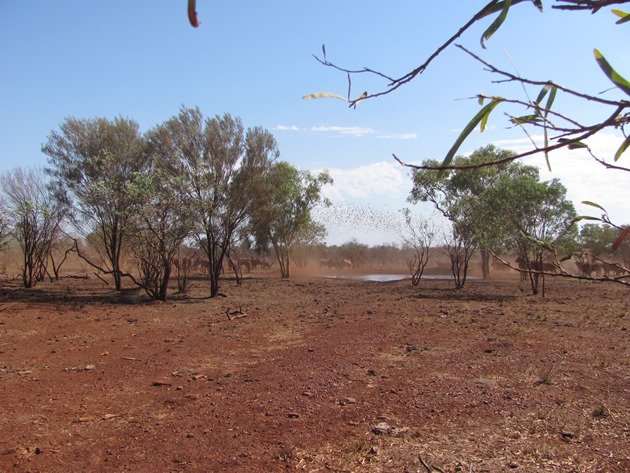
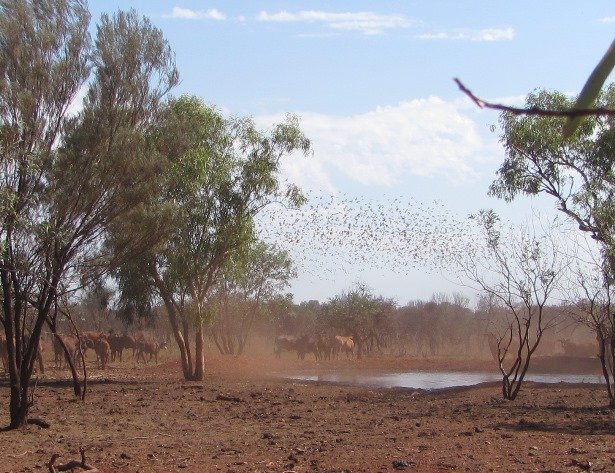
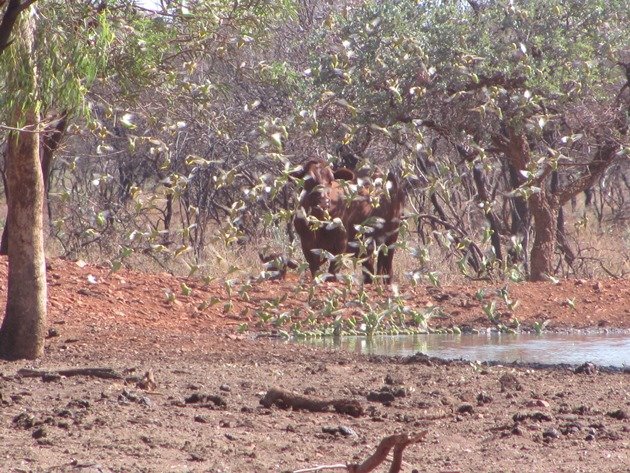
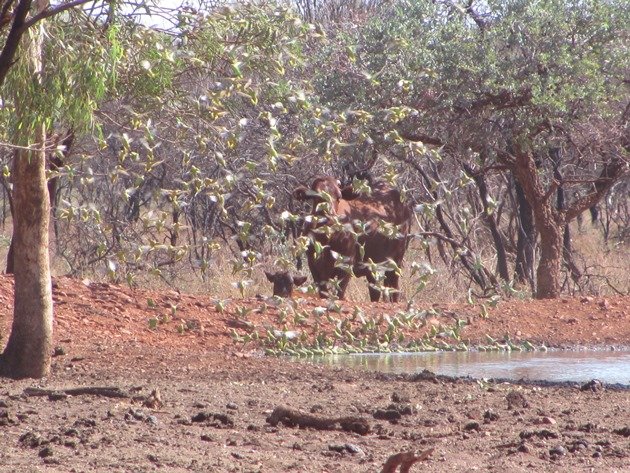
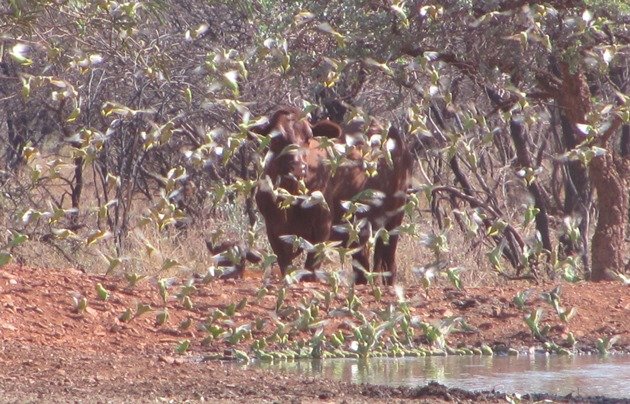
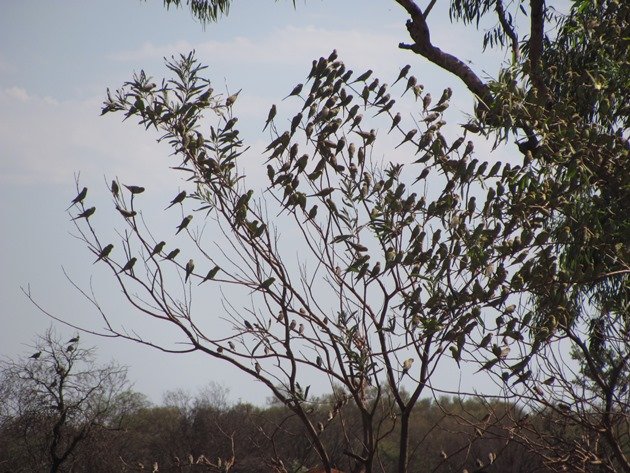
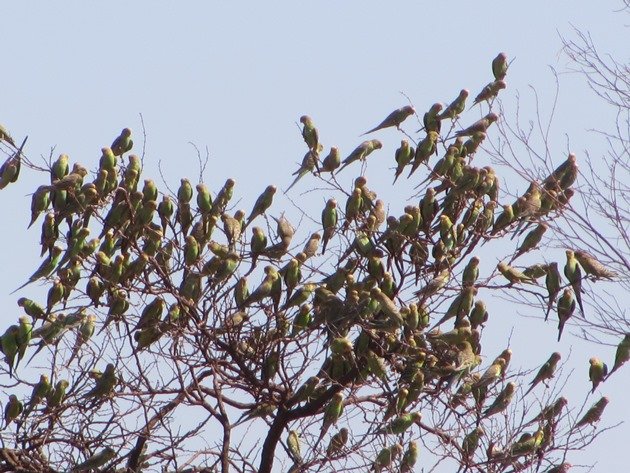
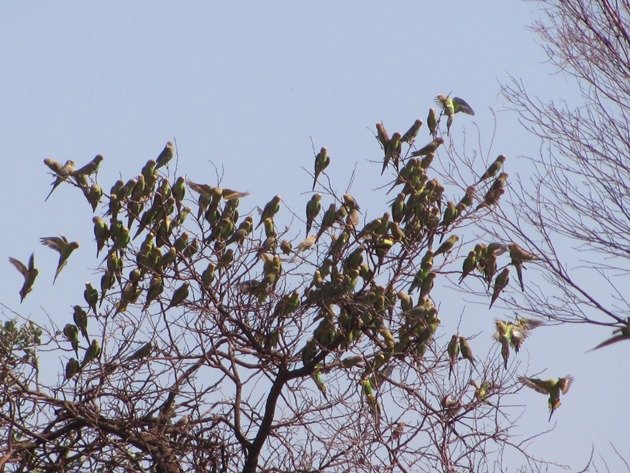











That’s amazing, Clare! I would love to see such huge flocks of such a gorgeous little bird.